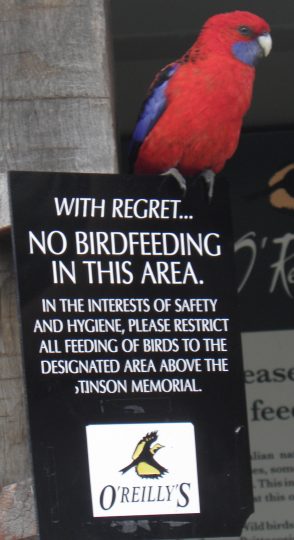
160 delegates from 33 countries registered for these events, although the actual numbers attending were a little smaller we had some great presentations and useful – at times provocative – discussions

A report on Day 1 is now available (see below), and reports on the other two days soon will be. Meantime please browse this page for information on our speakers and their presentations
Please use the comments option below this page to ask any questions for the presenters before the webinars begin, or offer comments, links and other information. During the webinars, you can use the “chat” option that appears at the base of the screen to ask questions or offer comments and links to further information.
The Zoom meetings were set up by Aise through the University of South Australia
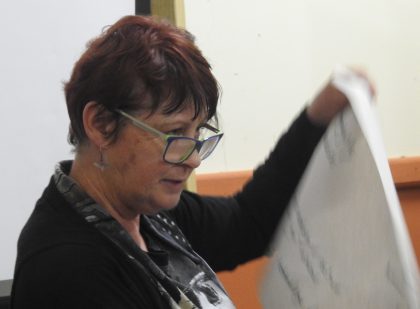
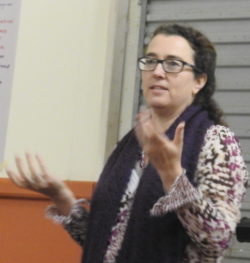
Chairs of the various sessions were WTA committee members Ronda Green, Aise Kim, Maree Kerr and Leah Burns
Full report of webinars
Download Report of Day 1
Days 2 and 3 will. be available soon
Wildlife interpretation
Quality education that leads to enhanced understanding and appreciation of wildlife, their ecology, behaviour and conservation needs, is an essential component of good wildlife tourism. WTA has had two workshops dedicated to this topic, and it will figure largely in next year’s conference, including a field trip to showcase some interpretation techniques. It news to be adjusted to the audience There will b different age levels, different languages, different levels of expertise etc. Also, some want to learn as much as possible, taking notes and asking lots of questions, others are mostly there to relax but still appreciate some enhancement to their understanding of their new surroundings, including the wildlife, as long as it is also entertaining. As Gilbert K. Chesterton once said “There is a great deal of difference between an eager man who wants to read a book and the tired man who wants a book to read.” here is also a different between those who travel to learn as much as possible about the cultures and the ecosystems, and those who are tired and frazzled and just seeking an escape. Some degree of interpretation is still possible for all, but the tour operator needs to be sensitive to different needs.
Wildlife interpretation experiences
Noel Scott, University of the Sunshine Coast
Wildlife experiences are often seen as requiring interpretation: an educational component of a tour, presenting accurate information in a way that enhances an understanding and appreciation of the animals and their ecosystems. This is a cognitive approach to designing wildlife experiences – emphasising learning and information. An additional means of creating value for visitors having a wildlife experience is to provide engaging and emotional experiences. Such an approach reinforces learning and provides more memorable outcomes for visitors.
[Noel has convened many sustainable tourism courses for the Griffith Institute For Tourism (GIFT) and elsewhere in Australia and Asia]
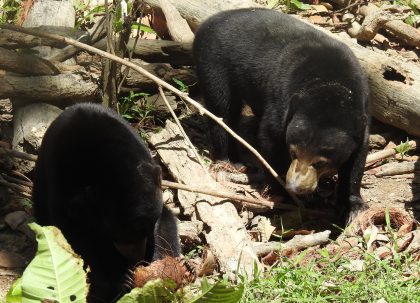
Using narratives to engage potential travellers in wildlife tourism
Sarah Pye, University of Sunshine Coast
Sarah Pye’s doctorate focused on using narratives to engage non-specialist audiences in species conservation. Her creative artefact, Saving Sun Bears, tells the story of Malaysian founder and director of the Bornean Sun Bear Conservation Centre, Dr Wong Siew Te, and the Malayan sun bears he has vowed to protect. In this short presentation, Sarah will explore the importance of narratives to engage wildlife tourists in conservation. She has recently published the book “Saving Sun Bears: One Man’s Quest to Save a Species“.
Tourism assisting conservation
Wildlife tourism can confer both positive and negative effects. WTA’s aim is always to minimise the negative and enhance the positive. Problems and their solutions can be complex, and there is much to discuss.
Also see:
Tourism and Protected Areas (IUCN)
Incentivising Conservation Outcomes through Certified Wildlife Friendly® Tourism
Marissa Altmann, Wildlife Friendly Enterprise Network, USA
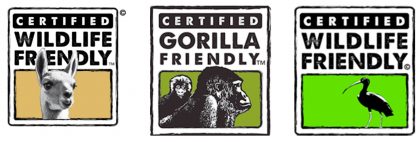
“The Certified Wildlife Friendly® seal protects the world’s most endangered wildlife in some of the most spectacular landscapes on earth” (Wildlife Friendly website)
Marissa completed her Master’s research on the study of the effects of wildlife-based tourism on conservation. She serves on the IUCN Tourism and Protected Areas Specialist Group and Biodiversity Working Group, and her writing on tourism and conservation has been published in multiple reports and book chapters.
Voluntourism: defining the good from the bad
Presenter TBC. ANIMONDIAL

There is an increase in demand for volunteer placements involving animals with a noticeable growth in projects and organisations offering such experiences. Unfortunately, on occasion such volunteer activities can have negative impacts on the animals and local communities if not managed appropriately.
Voluntourism, should be responsible and strike a balance between the needs of visitors, suppliers, local communities, animals and their welfare and the natural environment (ABTA Guidelines).
During this insight, I will consider the different experiences involving animals, and offer some guidance on how to distinguish the good from the bad
The ability of businesses to declare a climate emergency
Innes Larkin, Mt Barney Lodge
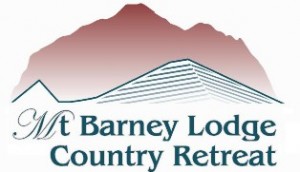
Innes Larkin will challenge Wildlife Tourism members to look closely at their approach to Climate Change and see if they can be the drivers of Climate Emergency Declarations, and the associated actions that align with this, across the world.
[This was to have been a major topic in this year’s confront, and will be next year (plus inputs on our website between now and then). A video prepared by Innes and Tracey Larkin for our workshop last year can be viewed here. They have been urging local businesses and Council to declare a climate emergency]
Use of protected areas and the implications for conservation and a responsible attitude to wildlife tourism.
David Newsome, Murdoch University, WA
- I will consider the use of protected areas for recreational purposes and highlight that, in many cases, conservation is being compromised because we are losing sight of the conservation function of protected areas.
- I also want to make the point that COVID-19 ,while problematical for many wildlife tourism destinations, provides us with an opportunity to do better in the future.
- What role can WTA play in raising political and community awareness regarding the future of recreation and tourism in protected areas?
Sample of publications:
- Wildlife Tourism (book)
- Natural Area Tourism (book)
- Newsome, D. and Hughes, M. (2018) The contemporary conservation reserve visitor phenomenon! Biodiversity and Conservation 27: 521-529.
- Newsome, D. (in press) The collapse of tourism and its impact on wildlife tourism destinations. Journal of Tourism Futures
Visitor management strategy for sustainable manta ray tourism in Marine Protected Areas (MPAs) of Raja Ampat – West Papua (Indonesia)
Maulita Sari Hani, Conservation International
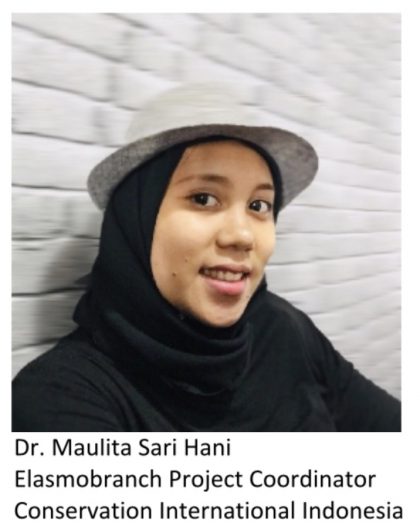

Raja Ampat is located in the Birds Head Seascape of Papua Island – Indonesia and designated as the manta ray sanctuary. It is a home for both species of manta ray, M.birostris, and M.alfredi, the endangered fish that are fully protected by Indonesian law and listed as vulnerable on The IUCN Red List. the manta ray plays an important role as a flagship species and tourism attraction in Raja Ampat. There are thousands of tourist visits Raja Ampat each year with more than 50% of them would like to experience swimming with this charismatic species. In order to protect the fish,conservation measures developed to mitigate negative impacts from wildlife tourism including the deployment ofsatellite tagging, carrying capacity analysis, mark-recapture, and photo ID monitoring. Based on our scientific studies, a number of conservation initiatives are proposed to the stakeholders including daily patrol, provision of ranger post, production of interpretation materials, reservation system, user fee system, and local rangers. The manta ray tourists are limited to a maximum of 20 people of divers and snorkelers in an hour operates 6 days per week from September to April. Tourists have to follow some procedures when entering Raja Ampat including pay the payment ecosystem services, make a booking to swim with the manta ray, report to the ranger post before and after the encounter with manta rays and involve as citizen scientists. Raja Ampat is leading for its sustainable manta ray tourism in Indonesia by utilizing science and community-based approaches to protect the fish while maintaining manta ray tourist
experiences.
Human/wildlife interaction
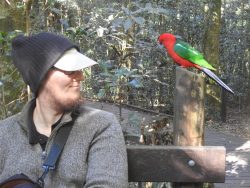
in Lamington National Park.
Photo: Araucaria Ecotours
There are some very disturbing examples of wildlife interactions (e.g. this National Geographic article on selfies in the Amazon and of course lion cub petting for the canned hunting trade) but there also interactive experiences under much better welfare conditions that raise money for conservation, give much pleasure to visitors and have the potential to provide opportunity for education with an attentive audience and promotion of a positive attitude towards the animals. Where do we draw the line?
What is meant by “interaction” and when is it appropriate?
Presenter Daniel Turner, ANIMONDIAL


‘Animal interaction’ is a commonly used phrase by tour operators when describing holiday experiences with animals. It is used in the context of direct animal contact, such swimming with dolphins, but it is also used when describing wildlife viewing experiences, where contact is less likely.
Tourists tend to seize every opportunity to interact with animals; the more exotic, the greater the interest. Yet, at the same time, 90% of travellers want their travel company to protect animals.
During my insight I will consider the various references to animal interaction, examples of such activity, the advice offered through industry guidelines, and which types of animal interaction no longer considered appropriate.
Our scientific knowledge of the animals used in tourism has significantly improved featured and although animal welfare is a complex area given the different requirements for different species, we are now starting to understand how captivity and human/animal interactions affect their physical and mental wellbeing.
The popularity of animal attractions and interaction is increasing with tourists. Where performances or interactions with wild animals are permitted (including photo opportunities), it should never cause the animal any fear, distress or injury. The animal should always have the choice to terminate the activity if desired (i.e. no holding of animals for photos, as they cannot move away).This may be caused by a short-term problem, such as heightened stress caused by human contact, or a long-term problem, whereby the stress imposed on an animals’ physical or mental state is to such a degree that there are adverse consequences.
ANIMONDIAL is the leading global tourism consultancy specialising in responsible animal tourism. Established by ex-colleagues Daniel Turner and Helen Usher, ANIMONDIAL works with travel businesses, non-profit organisations, and academics to make a positive difference to animals, species conservation, local communities, travellers, and global destinations.Combining two decades of expertise in applied animal welfare science, sustainable tourism development, and corporate engagement, ANIMONDIAL provides a fresh approach to managing associated risk and addressing persistent challenges.
Daniel Turner is an environmental biologist who has been working for the advancement of applied animal welfare for over 20 years. He established a more pragmatic approach to working with the travel industry, creating capacity-building programmes and guidance, which has included ABTA’s Animal Welfare Guidelines (2013). In 2018, Daniel co-founded ANIMONDIAL, a specialist consultancy that provides impartial advice and practical guidance to travel businesses. E:daniel@animondial.com
Bat Tourism
Maree Kerr, Australasian Bat Society and Wildlife Tourism Australia (vice-chair)
Maree Kerr and Sera Steves have been developing a Bat Tourism app, to be launched at next year’s conference. They are not promoting close encounters with bats (and warn people against touching any if not vaccinated) but do promote observations of them in the wild and in good captive settings such as the Tolga Bat Hospital, and dispel some of the paranoia that has gripped some who live near bat colonies.
Interactions with Macaques at Japan’s first monkey park
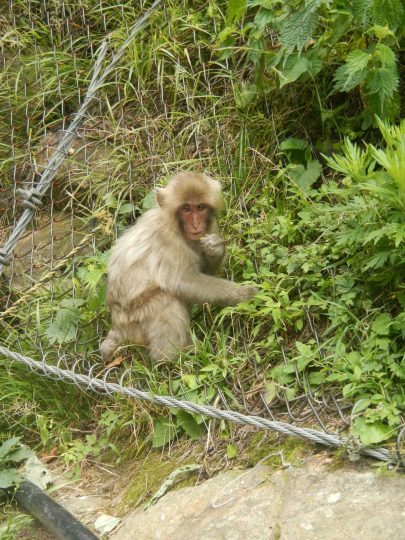
Thomas Jones, Ritsumeikan Asia-Pacific University, Japan
We will review Interactions at one of of Japan’s first monkey parks thought to host one of the planet’s largest troop of uncaged Macaques. Despite the name Takasakiyama Natural Zoo (TNZ), macaques can be viewed by visitors under free-range conditions. Provisioning began in 1947 aiming to i) mitigate crop raiding; ii) conduct primatology research; and iii) encourage tourism. Impacts of provisioning on macaques including a higher birth rate, shorter inter-birth intervals and lower infant mortality. Beyond physiological impacts, the population was affected by overfeeding that contributed to the troop’s rapid growth and subsequent fission. TNZ’s estimated monkey population in 1950 was 166, peaked in 1995 (n= 2128) before declining by 2018 (n= 1173), partly due to a ban on tourists’ purchasing snacks and hand-feeding the monkeys since 1993.
Sustainable Wildlife Tourism in Asia and the Pacific
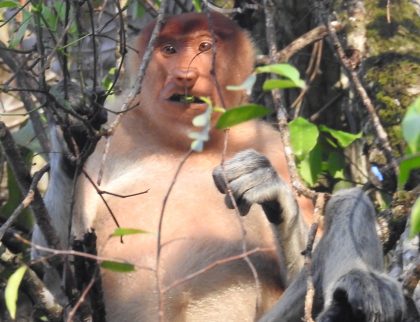
You can download the link to the UNWTO report on this topic here. “The present study was carried out by the World Tourism Organization (UNWTO) and Professor Noel Scott, The University of the Sunshine Coast, Australia, under the auspices of Mr. Xu Jing, Director of the Regional Department for Asia and the Pacific (RDAP). It was prepared under the framework of the UNWTO/Chimelong Initiative. UNWTO wishes to place on record its deep appreciation to Professor Noel Scott, lead author, The University of the Sunshine Coast, Australia, and Dr. Ronda Green, Chair Wildlife Tourism Australia, and Adjunct Research Fellow, Environmental Futures Research Institute, Griffith University, Australia, for their diligence and cooperation in finalizing the study.”
The UNWTO report on Sustainable Wildlife Tourism in Asia and the Pacific

Noel Scott, University of the Sunshine Coast
This presentation provides a summary of a 2020 report provided to the United Nations World Tourism Organization on Wildlife Tourism in Asia and the Pacific. The report was co-edited with WTA chair Ronda Green. It provides case studies from countries of Asia and the Pacific of non-consumptive forms of wildlife tourism (no hunting, fishing, or collecting) and concentrates on the viewing of wildlife. A number of general trends and lessons are provided.
Noel has convened many sustainable tourism courses for the Griffith Institute For Tourism (GIFT) and conducted coursed in various Asian countries, and conducted courses in various Asian countries as well as organising several short courses for delegates from Indonesia and Sri Lanka in Queensland. He was lead author and co-editor (with WTA chair Ronda Green) of the recent UNWTO report on Sustainable Wildlife Tourism in Asia and the Pacific
Wildlife tourism in Indonesia’s protected areas
Jatna Supriatna, Institute for Sustainable Earth and Resources (I-SER)University of Indonesia
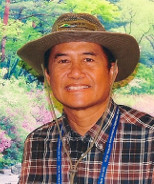
Tourism and recreation activities in the Indonesia’s protected area have been developed in the area of tourism parks and national parks. In the national park, tourism activities can only be developed at utilization zone and on a limited basis. The government can provide nature tourism included wildlife tourism exploitation permits to state-owned companies / enterprises or private or cooperatives for a period of thirty years for the provision of nature tourism related facilities and infrastructure in the national park’s utilization zone. Those infrastructures should be based on the National Park Nature Tourism Management Plan. In the protected area outside of marine park, many of those activities are primate tourism. These primate watching activities can be found in many parks ranging from night watching for tarsiers and coucangs, the langur and macaque monkeys, up to gibbons and orangutans.
Jatna is author of a book covering all of Indonesia’s national parks. He has conducted much primatology and other research, is currently Chairman at the Research Center for Climate Change, University of Indonesia, and has recently been appointed by the new Minister of Tourism as a member of Indonesia Sustainable Tourism Council (ISTC) with 9 more experts and Government high ranking officers.
Community-based whale shark tourism in Sumbawa (Indonesia)
Maulita Sari Hani, Conservation International
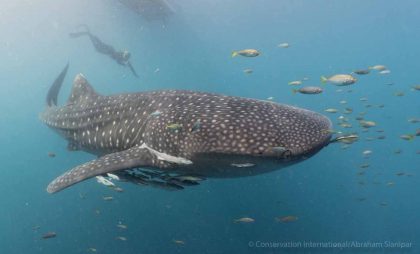
Conservation International Indonesia supports the elasmobranch conservation program with the deployment of satellite tagging on whale sharks (Rhincodon typus) in Indonesia including in Saleh Bay – West Nusa Tenggara. Whale shark conservation allowed the local community to utilize the sightings of this fish for tourism. Preliminary studies on social and economic aspects conducted to illustrate their understanding of species conservation and fisheries utilization. The result of frequency distribution demonstrated 95% of 86 respondents show positive vision towards whale shark conservation and tourism development. The community proposed to utilize the community assets for tourist services and recommended the government to establish a related policy to better protect and utilize whale shark sustainably. Furthermore, the existing income of local people shows the economic prospect from tourism development would be an additional revenue after their main income from fisheries and agriculture. These results consulted with the government and we encourage them to establish some policies, to support a number of physical infrastructures, and to provide capacity-building programs together with other stakeholders. Since 2018, community-based whale shark tourism has been operated in Saleh Bay and involve approximately 700 villagers active in providing tourism services and conservation activities. There were 478 whale shark tourists visited the bay from September 2018 to December 2019 and has contribute thousands of dollars to species conservation and local economic incentives. These findings have an important implication that the role of the local community in the process of planning of tourism and conservation initiatives together with other stakeholders is a requirement. A participatory approach is essentials to develop a sense of community ownership while enabling the government to govern better and sustain the benefits both for species conservation and community.
Requirement of Sustainable Wildlife Tourism Strategy for Sri Lanka
Madura Thivanka Pathirana, British School of Commerce

Sri Lanka Wildlife Tourism Status
Wildlife tourism is indubitably one of the fastest growing sec-tors of the tourism industry all over the world and same situation in South East Asia including Sri Lanka. In Sri Lanka there are 22 national parks (DWC, 2015). From those, four major parks, Yala National park, Horton Plains, Uda Walawe National park, Minneriya and Kaudulla National park are the most preferred parks among the international and local tourists. Furthermore, Sri Lanka experienced 2,333,796 tourist arrival in 2018 and 1,913,702 in 2019 with Easter Sunday attack (SLTDA, 2020). From these arrival visitation percentage shows in following Table 1.

Current Issues
The average number of vehicles that entered the parks over 700 in peak.
Over capacity of visitors that is more than 1000 visitors at a given time.
Negative political pressure to enforce law and order inside the parks.
Negative stakeholder pressure especially from Jeep owners and local communities to enforce law and order inside the parks.
Damage to the animals and parks by misbehaving inside the parks (Harassing animals, unethical driving, disturbing animals etc…)
Adding more, During COIVD-19 those parks were shut down for nearly 3 months. This allowed those parks and animals to redevelop their undisturbed freedom like never before (Mittapala and Pilapitiya, 2020). Further, I have noticed the difference between businesses based wildlife parks and natural wildlife parks after 10 years of post` war era in Sri Lanka tourism. This is an opportune moment to all of us to retain this redeveloped natural establishments for a sustainable future with better sustainable strategies.
- Department of Wildlife Conservation
- SLTDA: Sri Lanka Tourism Development Authority
Ecotourism in Cambodia: the real deal
Barry Davies, Gondwana Guides
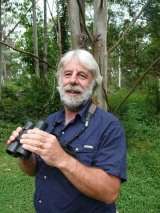
Ecotourism in Cambodia: the real deal.
Barry Davies, Gondwana Guides, Beechmont, Queensland.
Based in Siem Reap, the Cambodia Bird Guide Association is an NGO which provides birding tours and natural heritage tours across Cambodia. They are committed to the preservation of wildlife, nature and developing the livelihoods of people in conservation areas.
The CBGA was founded in 2016 by a group of accomplished birdwatchers and conservationists, who collectively have many years of experience, specifically in avian and wildlife preservation. They are dedicated to the protection of the environment and are actively working to make a difference in the Cambodian countryside.
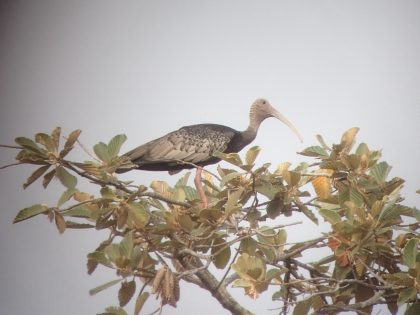
They believe that through their birding and ecotourism initiatives, they can inform and influence the thinking of Cambodians. Helping them to understand the value of the natural world and wildlife and to protect the environment. The role they play is designed to help local people develop their livelihoods, meanwhile ensuring a clean and sustainable environment for the next generation of Cambodians.
(Barry has been leading birding and other ecotours for several decades in Australia and neighbouring countries, and conducting environmental consultancies)
Wildlife tourism as a space for healing: Evidence from Japan
Rie Usui, Graduate School of Humanities and Social Sciences, Hiroshima University, Japan
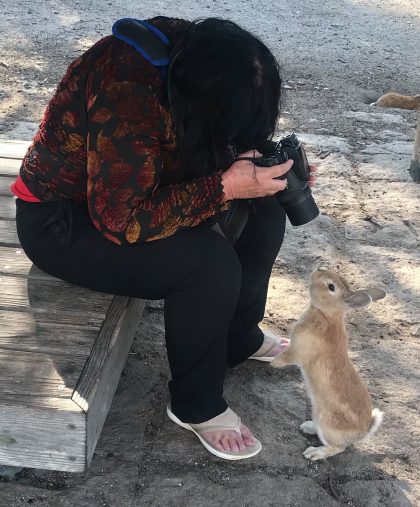

This study investigated a recent phenomenon surrounding feral animals that have become
the centre of tourists’ attention by illustrating rabbits as an example. By so doing, our aim
was to identify the position of feral animals within wildlife tourism. Feral rabbits inhabiting
Ōkunoshima Island in Hiroshima, Japan, have been a popular attraction among Japanese
and international tourists. Tourists travel to this unique island on Japan’s periphery to seek
for interactions with rabbits. The case of rabbits illustrates a possible shift in tourists’ view
of animals from aesthetic elements of nature to pets. To test our hypothesis, this study
explored tourists’ experiences in this feral animal-based tourism space by addressing the
following key question: What do tourists gain from interactions with feral animals? To
uncover the nature of their experiences, we examined tourists’ review comments posted on
TripAdvisor. We conducted discourse analysis of the reviews on Ōkunoshima Island. The
results show that many tourists found interactions with feral animals to be therapeutic,
indicating that wildlife tourism destinations with animals like feral rabbits provide a place
for healing in Japanese contexts.
Can interactions with captive Asian elephants ever be sustainable and responsible?
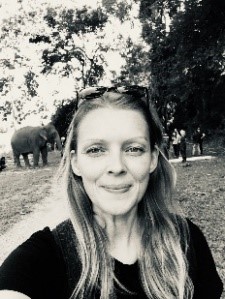
Nina Brask, ANIMONDIAL
Interactions with the Asian elephant remains one of the most popular experiences for travellers and tour operators, included on many a SE Asia itinerary. From ‘elephant jungle trekking’, to the transportation of luggage, to feeding, bathing, and walking with elephants – tourists tend to seize every opportunity to physically interact with elephants. If managed in a responsible and sensible way, with the welfare of the elephant and the mahout a priority, these interactions can take place, at least in the short term, in order to maintain local livelihoods and good animal welfare.
Nina Brask is an experienced zoologist and conservationist specializing in elephant biology and welfare practices, practical wild animal rescue and rehabilitation and wildlife ethics. Nina has worked and lived in Thailand and Lao PDR working as a project manager with WWF Thailand on human-elephant conflict mitigation and best elephant welfare practice consultant with the National Elephant Institute, Thailand. Latest she had a conservation manager and elephant welfare specialist role with Lao Elephant Initiative and Mandalao Elephant Conservation in Lao PDR focusing on the assessment of captive elephant activities and the implementation of humane, evidence- based elephant training initiatives, education of mahouts and engagements with local elephant communities.
Standards for elephant-based tourism
Ingrid Suter, Asian Captive Elephant Standards
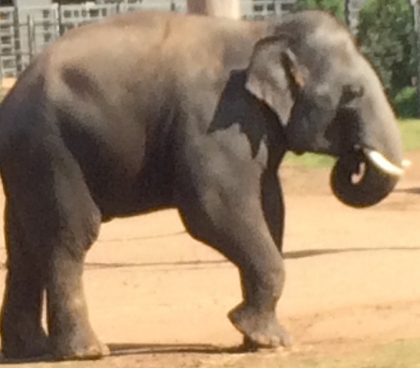
Asian Captive Elephant Standards (ACES) is a Thai-based auditing company specialising in Asian elephant camp accreditation. ACES evaluates elephant camps using over 190 unique criteria. All areas of elephant camp management are audited, including elephant husbandry and welfare; staff management; visitor safety and infrastructure. ACES believes in the application of expert advice and robust scientific methodology, rather than following inaccurate trends or emotive campaigns. With ACES camp standards, the cultural tradition of elephant ownership can be continued and respected without compromising exceptional levels of elephant welfare.

Dr Ingrid Suter is an experienced Asian elephant researcher and conservationist. Holding a PhD in Lao captive elephant conservation, Dr Suter has lived and worked in the Lao PDR for conservation organisations including ElefantAsia and the IUCN. Having seen firsthand the positive benefits captive elephant management and tourism can bring, Ingrid now spends her time ensuring tourism entities provide the highest levels of elephant welfare while respecting local needs and cultural norms.
Wildlife Tourism Australia becoming Wildlife Tourism Australasia
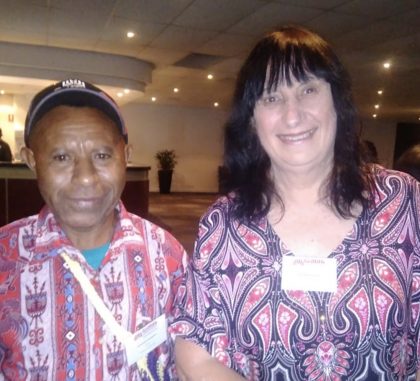
Australia was once geologically connected to islands to the north (New Guinea, Komodo etc.) and the east (New Zealand, Fiji etc.) before continental drift pulled them apart, so there is much they share. New Zealand broke away much earlier, so while we both have parrots and some other related birds, marine mammals and plants (Podocarpus, Agathis) there are striking differences (e.g. no snakes or non-flying terrestrial native mammals in New Zealand). Australia and New Guinea held together till far more recently and there is much that we share (marsupials, echidna, fruitbats, cockatoos, cassowaries, pythons …). Geographically nowadays we are all close neighbours, and travellers from other parts of the world often like to visit two or more neighbouring countries as part of a visit to our region. The definition of Australasia varies, sometimes just meaning Australia and New Zealand, sometimes meaning this plus everything east of Wallace’s Line (up to and including Sulawesi). More commonly it includes Australia, New Zealand, New Guinea (both PNG and West Papua) and neighbouring islands such as Micronesia and New Caledonia. It is this last definition we have in mind when considering the possibility of expanding WTA to become Wildlife Tourism Australasia. We already have members who conduct tours to NZ and PNG, and we are in touch with a number of researchers, tour operators and government officials from West Papua and neighbouring regions, as well as researchers in New Zealand, none of which solar have their own wildlife tourism associations. We are in the webinar throwing open the idea of such expansion of WTA for discussion.
Communitas, Australasia, Pasifika and Wildlife Tourism: How to involve tourism and communities of practice to achieve wildlife conservation within the Pacific Rim?
Jonathon Spring, PhD., Lecturer, Tourism and Hospitality, Auckland Institute of Studies, New Zealand jonathons@ais.ac.nz
Almost daily, evidence emerges of a sixth mass extinction of life on our planet and the lack of a comprehensive formal approach amongst the international community to respond to it (Barnosky et al., 2011; Ceballos, Erlich & Raven, 2020). Wildlife Tourism Australia (WTA) has challenged its members to consider broadening its national focus on wildlife conservation and sustainable tourism to other nations within Australasia. This initiative recognises that between thinking globally and acting nationally there are opportunities to extend and strengthen sustainable wildlife tourism networks.
Between 1998 and 2002 a myriad of stakeholder meetings about research and community engagement resulted in the establishment of Wildlife Tourism Australia (WTA, n.d.). A similar approach will be needed in populating an Australasian network to bridge a diversity in expression about the relationship between tourism, wildlife and conservation to negotiate a commonality in purpose. In that process, the sharing of collective and personal values and beliefs will be honoured, material issues will be untangled from the trivial, and vague ideas turned into concrete actions.
This presentation discusses the concept of communitas as an expression of stakeholders formulating the means to generate effective change (Hearn, 1980; Salter, 2015; Turner, 1969). It will also consider how the use of the term “Pasifika” by pan-Pacific communities may help WTA and its partners in selecting an appropriate geographical moniker to represent their collective identity.
References
- Barnosky, A. D., Matzke, N., Tomiya, S., Wogan, G. O., Swartz, B., Quental, T. B., … & Mersey, B. (2011). Has the Earth’s sixth mass extinction already arrived? Nature, 71(7336), 51-57.
- Ceballos, G., Ehrlich, P. R., & Raven, P. H. (2020). Vertebrates on the brink as indicators of biological annihilation and the sixth mass extinction. Proceedings of the National Academy of Sciences.www.pnas.org/cgi/doi/10.1073/pnas.1922686117
- Hearn, F. (1980). Communitas and reflexive social theory. Qualitative Sociology, 3(4), 299- 322.
- Salter, K. M. (2015). Structure and Anti-structure: Communitas in Damanhur, Federation of Communities (Doctoral dissertation, University of Western Australia).
- Turner, V. (1969). Liminality and communitas. The ritual process: Structure and anti-structure, 94, 130.
- WTA history (WTA website)
Effects of Coronavirus on Wildlife and Wildlife Tourism
The impact of Covid-19 on captive elephants and their mahouts in Thailand.
Emily Flower, Griffith University, Nathan, Qld, Australia
Due to Covid-19 travel restrictions, the decline in international tourism has hit Thailand hard. As there are no tourists, elephant tourism venues cannot afford to pay mahouts or feed the elephants. Mahouts who own their elephants and were hired by the venues have been stood down. With no income, these mahouts had no choice but to return to their villages on foot, walking their elephants home in groups. However, the issue of providing food for their elephants persisted once they returned home. In response, a number of individuals and organisations have been raising funds to provide feed for the elephants and monetary donations for the mahouts. The future of the elephant tourism industry in Thailand is currently uncertain; however, the Covid-19 crisis could provide an opportunity for an industry-wide shift to higher welfare standards.
Coronavirus: perspectives on wildlife tourism and the need to rethink our relationship with animals
Daniel Turner, ANIMONDIAL
Reports indicate that COVID-19 is a disease of animal origin, and like SARS before it, it has likely originated from live animal markets. In such places, large varieties of live and dead wildlife species are sold alongside dogs and other domesticated animals, often kept in cramped and unhygienic conditions. Conditions that present an unintentional incubator for many new diseases, carried by animals, that go on to infect humans. The World Health Organisation has recognised zoonoses are a significant threat to global health security, yet there are many opportunities for tourists to experience close, or direct contact with animals.
Does the new normal present a real need for travel businesses to review their animal-based experiences, recognising that many offer close or direct contact with animals? ABTA’s revised Animal Welfare Guidelines now advise against direct contact with wild animals. My impression, and recommendation is that we need to rethink our relationship with other animal species, and specifically review how we exploit and interact with them.
Bird-feeding forum
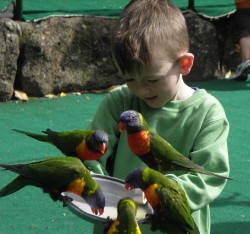
This was originally scheduled as a public forum at Southbank, Brisbane. This will still happen next year, Sunday 27h June 2021, but we are conducting a preliminary forum of it here in these webinars.
Panelists Michelle Plant and Darryl Jones will each present a brief introductory talk and then throw open for questions and comments (as with other sections of these webinars, please keep these brief to give others a chance
Darryl will introduce us to the big picture for wild bird feeding, which sits on a global stage, before providing comment on the potential for positive and negative impacts that require our attention. Michelle will discuss some results from her research that was conducted at O’Reilly’s Rainforest Retreat and Grants Picnic Ground. The results highlight the need for responsible stewardship of our wild bird (wildlife) feeding activities.
Michelle’s post-graduate studies were focused on bird-feeding, an d since then. has offered much advice on when it is and isn’t appropriate, and how best to do it to avoid negative effects on the birds. Darryl has conducted research on urban ecology for many years, and also offered such advice on this topic, including in two recent books The Birds at my Table and Feeding the Birds at Your Table
Marketing Wildlife Tourism
Digital maketing


Liz Ward, Tourism Tribe
Liz Ward, digital strategist and founder of the award-winning digital platform Tourism Tribe, will be joining us to share her top tips on optimising your communications and marketing in our uncertain COVID market. TourismTribe.com provides upskilling, support and assistance through short online courses, intensive COVID digital program, member support forum and consulting.
Chris Larsen, BlueSky Wildlife
How Blue Sky Wildlife can support your Wildlife Tourism Business
Chris Larsen, Director BlueSky Wildlife

“While the Travel & Tourism sector accounts for 10.4% of global GDP, wildlife tourism represents 3.9% of this figure, or $343.6 billion (per annum); a figure equivalent to the entire GDP of South Africa or Hong Kong”. This is a figure anticipated to increase at an accelerated rate in the foreseeable future as a younger generation in this recent global pandemic has woken up to the importance of biodiversity, nature and wildlife.
Blue Sky Wildlife is an online marketplace specialising in wildlife tourism. Its aim is to connect the independent eco tourist with reliable local wildlife specialists. Independent travellers can choose from over 400 wildlife trips, tours and safaris across 40 destinations worldwide. These range from day trips, set-departure tours or private, multiday and customised tours that are available throughout the year.Blue Sky Wildlife caters for the independent traveller who is comfortable with and prefers booking directly, whether that be flights, accommodation and/or travel experiences. The website offers the flexibility to make a direct approach to a local wildlife specialist, via an enquiry form, or to make a direct payment online. The latter includes Worldwide Traveller Protection for additional peace of mind.
Those travellers who like to work from a “bucket list” of animals they want to see in the wild, can also search from the home page by the name of the desired species and they will be provided with a list of the relevant tours. Alternatively, travellers can search from the home page by selecting a destination, type of tour or tour operator, and they can then subsequently filter their choices by tour focus, Wildlife Reviews, number of days, etc. These are just a few examples that demonstrate the flexibility of the system.
For tour operators specialising in wildlife tourism, Blue Sky Wildlife offers an additional channel to market and access to a unique digital platform to promote their tours to a global audience (for example the enquiries through the site are coming from: USA 30%, UK 27%, Canada 16%, Germany 8%). On the site, a number of tour operators have written unbiased blogs about the wildlife that can be seen in their areas, and there are also independent articles written by wildlife specialists. These have secured a page 1 listing on Google, linking back to the relevant tour operators and/or tours featured. There are also a number of individual tours that are now starting to secure page 1 on Google listings (e.g. search “Santa Mart Birding Tour” or “Birding Botswana”).Please note that we are presently offering a listing to only 2 or 3 wildlife specialists per state/territory from Australia who are able to meet the local wildlife specialist criteria. Interested in being listed? Apply here.
.
Developing a New Global Ethical Code of Conduct for Ecotourism
Kristi Foster, Terra Incognita
What if we could better promote ethical ecotourism and drive positive outcomes for people and wildlife globally as we enter the next stage of travel?
Terra Incognita is a community of over 50 Ecotourism Operators and over 150 Eco-Bloggers worldwide who deliver and promote ethical ecotourism.
We are currently developing a global Ethical Ecotourism Code of Conduct based on feedback from ecotourism operators, experts, tourists and media.
Join us to help develop an Ethical Code of Conduct that drives real change for people and planet.

Marissa Altmann is the Assistant to the Executive Director at the Wildlife Friendly Enterprise Network, where she works to develop integrated strategies for the sustainable use of biodiversity, including Certified Wildlife Friendly™ Tourism and species-specific tourism programs such as Certified Sea Turtle Friendly™ Tourism and Certified Gorilla Friendly™ Tourism and Park Edge Products, a partnership with the International Gorilla Conservation Programme.
Certified Wildlife Friendly™ Tourism is defined as “Tourism that maximizes opportunities for travelers, communities, and businesses to not only engage as partners but to advance the on-the-ground conservation of Key Species while minimizing negative impacts on wildlife.” In this presentation, Marissa provides a summary of her Master’s research findings as well as an overview of the Wildlife Friendly™ approach and its contributions to species and biodiversity conservation.
Marissa completed her Master’s research on the study of the effects of wildlife-based tourism on conservation. She serves on the IUCN Tourism and Protected Areas Specialist Group and Biodiversity Working Group, and her writing on tourism and conservation has been published in multiple reports and book chapters.